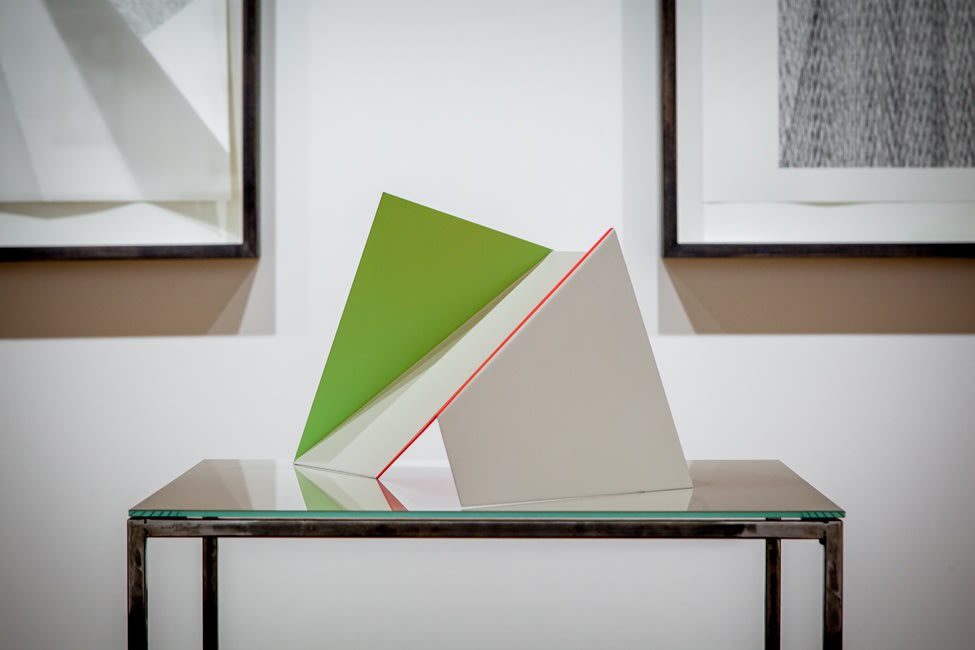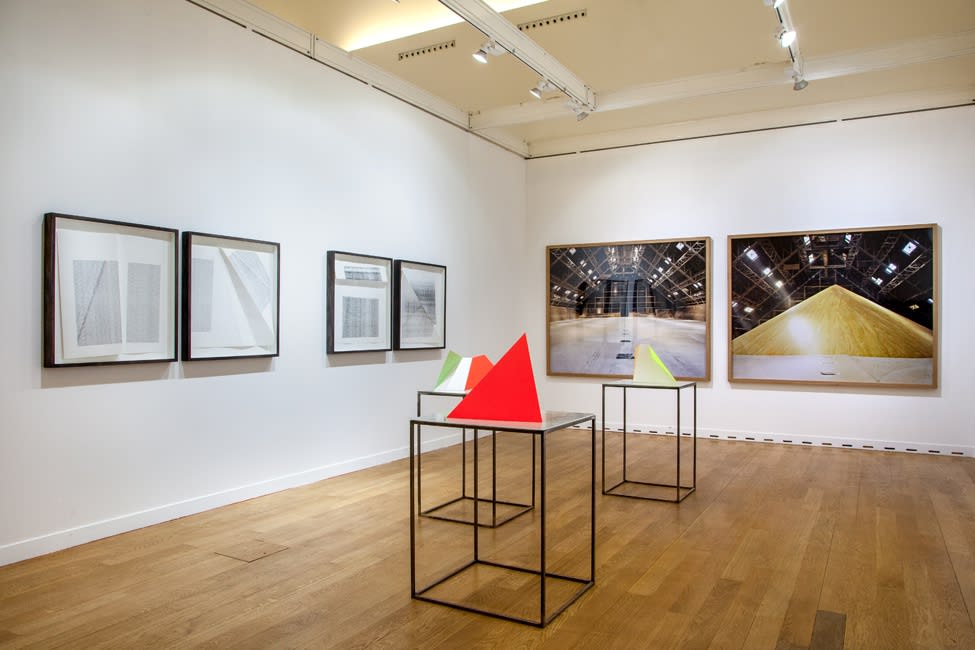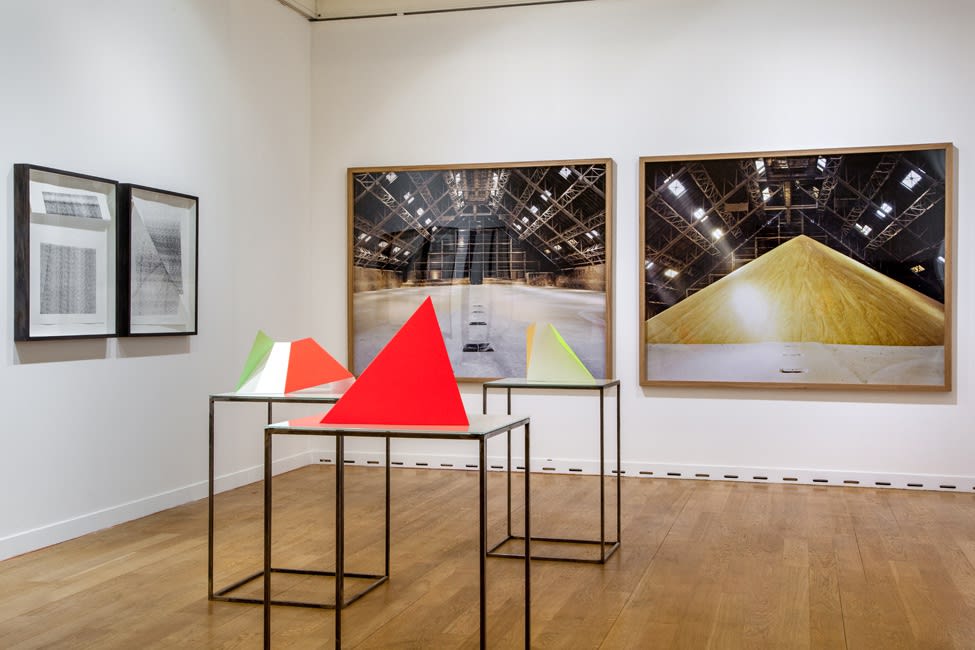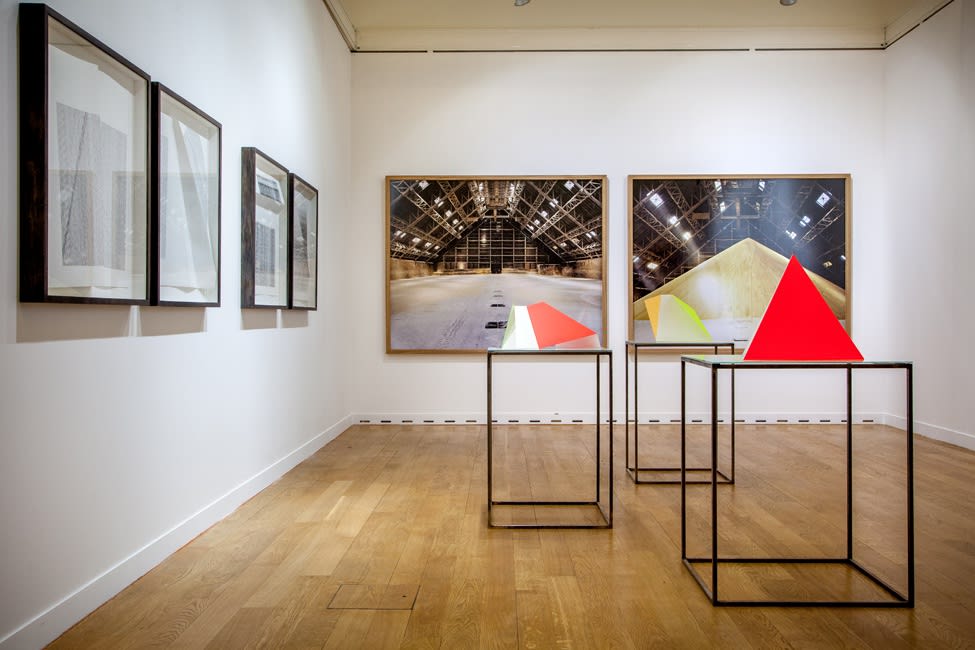FIAC 2015
The Third Line is participating at FIAC, Paris and is exhibiting works by Abbas Akhavan, Rana Begum, Sara Naim and Zineb Sedira. Zineb is also shortlisted for the prestigious Prix Marcel Duchamp, and is currently showing works in the Carré d'Art - Musée d'art contemporain de Nîmes, as part of the finalist’s exhibition.
The Third line is presenting works that reflect elements of land and cartography in the personal, cultural and geographical histories of the artists. They look at trade, travel, demarcation, architecture, and the human intervention in responding to nature as an ally and will be exploring the theme through drawing, photographs, installations and sculptural interventions.
Zineb’s work traces the lines of continuing journeys within the metaphorical borders that space and time, in between sea and land, encapsulate. Looking towards the sea, her photographs document nature, immigration, the ecosystem and man’s relationship to it all. Sugar Silo (2013) is from the Sugar Routes series, which traces the movement of sugar, starting its journey from locations across the world, and ending in the Port of Marseille. The warehouse storage rooms become backgrounds to a new kind of landscape, where the heaps of different coloured sugar resemble mountains. After filtering, the sugar is packaged off as a global commodity, its own local identity being lost somewhere along the trade routes.
Rana draws inspiration from urban visual stimuli such as the abstract clashes of form and colour that can be seen in the city, and combines them with the repetition of geometric form found in Islamic art. A new body of smaller, freestanding aluminum sculptures cast neon light via reflection on one side. This follows Rana’s established practice of working with minimalist aesthetic and urban physiognomies – each work demanding a level of interaction to be able to experience it in its entirety. The slightest shifts in colour, shape, movement, and viewing angle create complex new alignments through changing perspectives.
Abbas’ new ink on stone paper drawings (2014) follow his ongoing research, which has been deeply influenced by the specificity of the sites where he works: the architectures that house them, the economies that surround them, and the people that frequent them. Recent works have shifted focus, wandering onto spaces and species just outside the home – the garden, the backyard, and other domesticated landscapes.
Using predominantly photography and drawing in her artwork, Sara looks at the physical forms of things that are unknown, which stems from her interest in the body, and it’s interior and exterior tensions. The series Blood Cells Interrupted, Screens (2013) examines corrupt image files of Sara’s dead skin cells and blood cells. The static behaves as a source of miscommunication, but becomes physical and material. It recalls a feeling of information that has not been linked or found, though still revealing something new. Not one corruption resembles the other, with static noise becoming unique interruptions.















